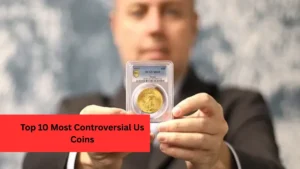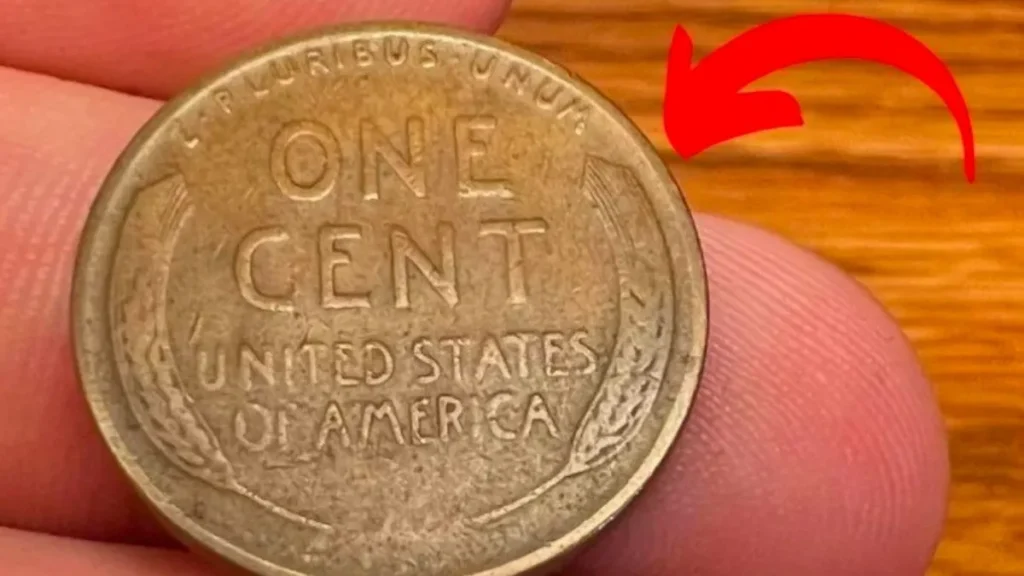The 1933 Saint-Gaudens $20 Gold Double Eagle
In 2021, this coin sold for $18.87 million, making it the most expensive coin in the world. However, its value isn’t the only thing that makes it controversial.
In 1933, the U.S. Mint produced 445,500 double eagles, but soon after, President Franklin Roosevelt issued Executive Order 6102, which banned private ownership of gold coins. The Mint reportedly melted down all but two coins, which were sent to the Smithsonian. Yet, in 1937, 20 coins were stolen from the Mint, bought by Philadelphia dealer Israel Switt, and resold illegally. The government managed to recover and destroy nine of these coins. One was legally sold to King Farouk of Egypt and exported in 1944, while 10 remained hidden in a safety deposit box.
When British dealer Stephen Fenton returned the Farouk coin to the U.S., it was seized by the government. After legal battles, the sale was deemed legal, and the coin was returned to Fenton. The government then agreed to monetize the coin, requiring the new owner to pay a nominal $20 face value fee, despite the coin’s $7 million sale in 2002. Today, this coin is the only legal collectible from the 1933 issue.
The Type 1 Standing Liberty Quarter
Designed by Hermon MacNeil and first released in 1916, the Standing Liberty quarter quickly faced criticism because it depicted Lady Liberty with one breast exposed, making it the first U.S. circulating coin to show female nudity.
The New York Society for the Suppression of Vice pressured Congress to demand a redesign. By late 1917, without MacNeil’s input, Liberty was clothed in chainmail, though some believe the Treasury Department initiated the change rather than public outcry. These early “Type 1” quarters are highly collectible and usually sell for much more than the later “Type 2” versions.
The 1964-D Peace Dollar
The Peace dollar was last officially minted in 1934 before a controversial 1964-D version emerged. In response to increased demand for silver coins in the early 1960s, the Senate approved funds to resume striking Peace dollars. Around 316,076 coins were minted at the Denver Mint, but they were reportedly melted down after news leaked.
Collectors have speculated that some coins may have been taken illegally by Mint workers. However, even if found, owning a 1964-D Peace dollar would be illegal since it was never officially authorized for circulation. PCGS even offers a $10,000 reward for anyone who can produce an authentic example for verification.
The 1804 Dollar
Although called the 1804 dollar, these coins were actually minted in 1834 by order of President Andrew Jackson as diplomatic gifts to foreign leaders such as the Sultan of Muscat and the King of Siam. While the Mint may have produced up to 19,570, only eight authentic examples are known today.
The controversy deepens because Mint official Theodore Eckfeldt secretly restruck these coins in 1857 (Class II coins) and sold them to collectors, who believed they were originals. Four of these Class II coins were later returned and melted down. Later, in the mid-1860s, six more illegal restrikes (Class III) were made and some still survive. Though illegal, these coins remain in private hands with little risk of government confiscation.
The 1946 Roosevelt Dime
After retiring the Mercury dime in 1946, the U.S. Treasury introduced the Roosevelt dime to honor President Franklin D. Roosevelt. The designer’s initials, “JS” for John Sinnock, appear on the coin near Roosevelt’s neck, which was common practice.
However, during the post-WWII Red Scare, conspiracy theories falsely claimed the initials stood for Joseph Stalin, suggesting communist infiltration at the Mint. Due to the rumors, Sinnock later changed his initials to “JRS,” and the Mint issued a statement denying the claims. Sinnock was also accused of copying the design from sculptor Selma Burke, but he maintained the design was based on his own studies of Roosevelt.
The 1909-S VDB Cent
Victor David Brenner’s Lincoln cent was very popular when first issued, with coins reselling for up to 25 cents. Brenner’s initials, “VDB,” appeared on the reverse as an official tribute but quickly became controversial.
Many believed Brenner, a paid government employee, didn’t need credit on the coin. Following complaints, the Mint removed the initials after just five days, making those early coins with “VDB” rare and valuable. The initials were restored in 1918.
The 1793 Chain Cent
The first coin made by the U.S. government on its own machinery, the 1793 Chain cent featured a chain on its reverse meant to symbolize unity. However, many people thought the chain symbolized slavery, which caused public outcry.
Critics also pointed out the poor quality of Lady Liberty’s hair design, likely due to the inexperience of Chief Coiner Henry Voigt. After producing 36,103 coins in March 1793, the Mint discontinued the Chain cent and replaced it with the Wreath cent.
The $1,000,000,000,000 Platinum Coin
Often called the “Coin That Never Was,” the trillion-dollar coin was proposed during the 2011 U.S. debt ceiling crisis as a way to avoid default. Legally, the Mint can create platinum coins of any value without Congress’s approval due to a 1997 law.
The idea was that issuing a one-trillion-dollar coin would give the government nearly a trillion dollars in seigniorage profit. However, critics argued this would cause inflation and disrupt the separation of powers by bypassing Congress’s control over spending. The proposal was widely mocked, with some joking it should feature con artist Charles Ponzi.
The 1921 Zerbe Morgan Dollar
Farran Zerbe, president of the American Numismatic Association, ordered a small number of Proof Peace dollars in 1920. However, the San Francisco Mint used older Morgan dollar dies instead, creating 1921 “S” Morgan dollars with a Proof-like finish.
Between 20 and 200 coins were struck, with only 5 to 10 known to exist today. These coins are often confused with Chapman Proofs. Some grading services label these “Struck from Zerbe dies,” but debate continues over whether they are true Proof coins or presentation pieces.
The 1913 Proof Liberty Nickel
In 1913, after the Liberty nickel was officially discontinued, five Proof nickels were secretly struck by two Philadelphia Mint workers using official dies without authorization.
Their existence became public in 1919 when dealer Samuel W. Brown advertised them for $500 each (about $8,500 today). Collector Edward H. R. Green eventually bought all five coins, which later passed into various private and public collections.
Two ended up in museums, one was thought lost but resurfaced later, and another, known as the Eliasberg Specimen, was the first U.S. coin to sell for over $1 million, fetching $1,485,000 in 1996.
FAQs
Q1: Why is the 1933 Saint-Gaudens Double Eagle so valuable?
It is the only 1933 gold double eagle legally allowed to be owned, combined with its rarity and dramatic history of illegal minting and legal battles.
Q2: What caused the design change in the Standing Liberty quarter?
Public discomfort with the exposed breast of Lady Liberty led to the redesign where she was clothed in chainmail.
Q3: Why is the 1964-D Peace dollar so rare and controversial?
Although minted in 1964, these coins were never officially released and were mostly melted down, making any surviving examples illegal to own.
Q4: What is unique about the 1913 Proof Liberty nickel?
Only five were illegally produced, making them some of the rarest and most valuable U.S. coins ever.



